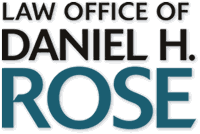How to Determine Responsibility in a Self-Driving Car Accident
27 February
2021
Technology continues to grow in every aspect of American society, including the automotive industry. The auto-industry estimates autonomous vehicles won’t make it to mass-market until 2025 because technological hurdles still remain before mass-market. Recent incidents involving many self-driving cars on California roads have raised safety concerns. This raises an interesting question of liability. In an injury by a self-driving car, who is at fault for the accident? Is it the manufacturer or the operator?
What is a Self-Driving Car
According to the Victoria Transport Policy Institute, there are 5 levels of autonomous vehicles:
Level 1: Driver Assistance. Offers some driving assist features, but the vehicle is controlled by a driver.
Level 2: Partial Automation: The vehicle has combined automated functions, like acceleration and steering, but the driver must remain engaged and monitor the environment at all times.
Level 3: Conditional Automation: A driver is necessary but not required to monitor the environment. The driver must be ready to take control of the vehicle at all times with notice.
Level 4: High Automation: The vehicle is capable of performing all driving functions under certain conditions.
Level 5: Full Automation: The car performs all driving functions under all conditions.
When Is the Driver Responsible After a Self-Driving Car Accident?
At the present moment, most autonomous cars operate at Level 2 or 3 of the Automated driving levels. That means that even though the vehicle can perform functions independently, a driver is still necessary to monitor the surroundings. These self-driving cars alert the driver to disengage autonomous mode and control the vehicle to avoid a crash.
In March 2018, a self-driving Volvo hit and killed a pedestrian in Arizona. The test car was part of Uber’s testing. The car’s technology couldn’t predict the direction of the woman walking. Unfortunately, the driver inside wasn’t watching the road. Instead, she watched an episode of “The Voice.”
In the end, blame was shared among the driver, Uber, the car manufacturer, and even the pedestrian. These are complex cases that require investigation into the most minor details. However, since a driver is still responsible for monitoring the environment and avoiding such a crash, the driver will most likely be one of the parties at fault.
When Is the Manufacturer Responsible After a Self-Driving Car Accident?
Just because the driver is responsible doesn’t mean that the manufacturer is home-free. In 2018, a Tesla Model X was on autopilot and collided with a highway barrier in California. The impact killed the driver. The victim’s family sued Tesla because they believed that the design, manufacture, testing, and maintenance of the Tesla model failed to adequately instruct drivers to take control of the vehicle. Although Tesla settled the case, The State of California’s Department of Transportation was also named a party in the suit because they failed to fix a crash attenuator. California’s Department of Transportation conducted an investigation. It found many contributing factors that led to the death, including the driver, Tesla’s autopilot system, and a damaged crash attenuator.
Contact a Skilled Attorney
Injury by a self-driving car presents complex issues. To determine liability, whether it was the driver or manufacturer’s responsibility, can be difficult. The car’s level of autonomy will become a factor in assigning blame. Additionally, the software and hardware may be supplied by many different companies. That can make it harder to determine fault. An experienced car accident attorney at Dan Rose Law Firm can help you investigate your situation to develop a successful legal strategy.
Posted in Car Accidents
February 27th, 2021 by Daniel Rose
Tags: car accident, self-driving accidents
